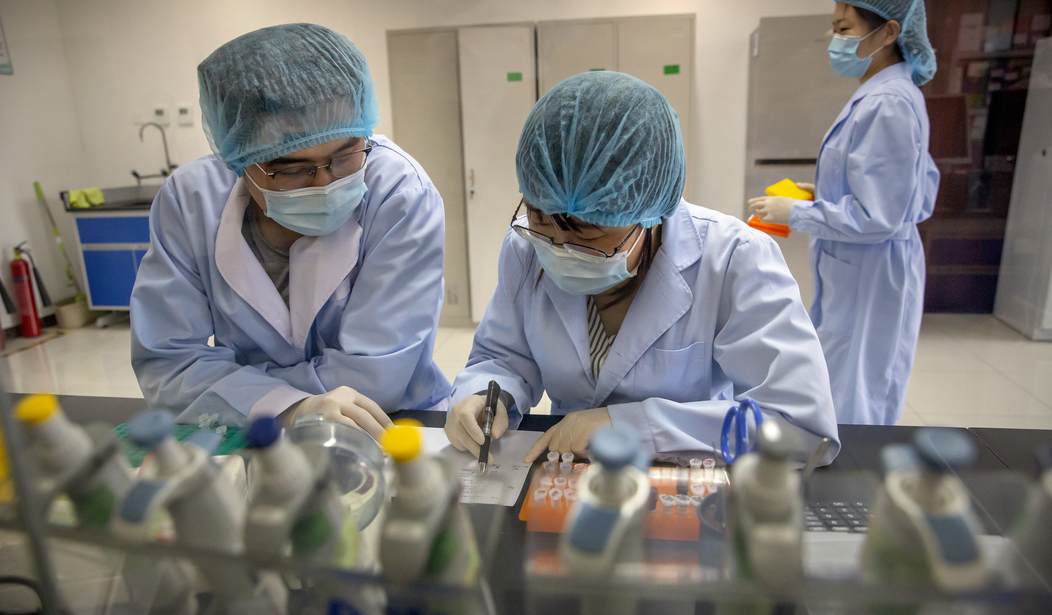During the peak of the Wuhan coronavirus pandemic in April and May, Orange County, California health care officials reported inaccurate numbers. For more than five weeks, the county incorrectly included 30,000 serology tests – used to detect whether or not a person has antibodies for the virus, suggesting they previously had an infection – into their "cumulative tests to date" figures, the Los Angeles Times reported. The mistake inflated both the county's testing numbers and the number of positive Wuhan coronavirus cases.
Serology tests give health care providers an idea of how prevalent the virus is in their area but they aren't reliable, especially when determining whether or not a person actively has the infection.
According to the Orange County Register, the mistake inflated the county's coronavirus numbers by 13 percent.
“I would like to sincerely apologize for any confusion this matter has caused for the community. In the future, [we will] be more transparent with respect to the data that informs policy and personal health decisions of our residents," Dr. Clayton Chau, director of the Orange County Health Care Agency and the county’s interim health office, said during a press conference earlier this month.
The mistake took place from April 28th until it was detected on June 3rd. The Health Care Agency immediately removed those numbers from their data but the website wasn't updated until June 26th. Dr. Chau told The Times the staff attempted to correct the mistake on the website but system glitches prevented the change from taking place.
HCA officials made the mistake when downloading the coronavirus testing results from the California Reportable Disease Information Exchange (CalREDIE).
From the Register:
There, some lab results are manually processed — showing up in a “staging area,” where local health departments must then process and import them into the CalREDIE database. “This process is typically used for reports that health departments need to see immediately in order to take action; COVID PCR results are processed through this option,” the county said.
Some results, however, are “auto-processed,” which means the lab results don’t show up in the staging area but are automatically processed into the database. Serology tests are auto-processed into the system because there’s no immediate action the health department needs to take on them, the county said.
On April 28, CalREDIE enabled auto-processing of serology tests, and “these serology test results were included with PCR test results in ‘Cumulative Tests To Date,’ ” the county said.
“Serology tests never should’ve been included as they are not an appropriate diagnostic test. This was an error, which is why they were removed when HCA leadership became aware of the issue. Approximately 30,000 serology tests were removed.”
However, even though officials realized the mistake June 3 and stopped including additional serology tests in the numbers starting June 4, they didn’t remove the ones they’d already reported until June 26 when they launched a new COVID-19 data dashboard. It does not report any information about serology tests.
When pressed for more details on precisely how serology tests came to be added to PCR tests — who’s charged with reviewing the numbers before they’re posted? how did the error continue for so long without detection? — the county said that, once CalREDIE enabled auto-processing of serology tests, “total COVID tests” would technically include serology tests because they are, indeed, COVID tests.
“However, the intent of the public reporting is actually total PCR COVID tests, which is why including serology tests was incorrect,” the statement said. “When the OC Health Care Agency’s leadership became aware of this, we responded accordingly and as quickly as we could given the current workload and demands on our team.”
It remains unclear precisely how the error came to the county’s attention.
Recommended
Interestingly enough, none of the Orange County Board of Supervisors knew about the mistake until the Register published their article.
“I immediately asked Dr. Chau to provide an explanation of what happened and how it affects our numbers,” Board Chairwoman Michelle Steel told The Times. “I have also asked Dr. Chau to begin reporting antibody testing separately on our website so that all the data will be clear and trackable to us and to [the] public.”
One of the reasons this "mistake" is so costly: whether or not businesses can operate is based on the number of active infections and community spread. The higher the cases and the infection rate, the less likely businesses are able to operate, which puts a drain on the economy, small businesses and families.
Dr. Chau said the mistake didn't negatively impact reopening.
“I can assure you in terms of the positivity rate it was always downloaded from the state and we did not self-calculate it so the number would still be the same,” he explained. “It would not have affected decision-making.”

























Join the conversation as a VIP Member